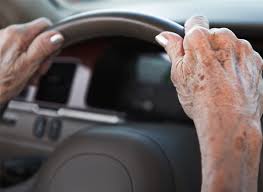What does drawing clocks have to do with driving cars?
The Bottom Line
- Changes in health and medical conditions that can affect driving ability are more common with age.
- Having a driver’s license in older adulthood translates to higher levels of social participation.
- Performance on the Clock-Drawing Test can be used to identify older drivers with cognitive impairment who may be in need of further assessment.
- Currently, there is no single cognitive screening test that can solely determine with absolute certainty whether an older person is fit to drive.
Getting a driver’s license is a rite of passage that for many symbolizes freedom
The birth of the modern automobile was credited to German inventor Karl Benz in 1886 (1), but the rise of ‘car culture’ is a more recent phenomenon. Our dependence on the car as a form of transportation is firmly linked with those born between the years 1946 and 1964. This is the generation known as the ‘baby boomers’. The majority of baby boomers have now reached the age of 65 and they will comprise the largest segment of licensed drivers in Canada (2). Baby boomers love their cars and the independence it gives them.
Seniors with a driver’s license and a car are more likely to participate in social activities that have been linked to quality of life (2). Although, driving a car in older adulthood can facilitate social connectedness (meeting friends and family), there nevertheless is cause for concern (2). Next to teenagers, those aged 70 and older have the highest car collision rates when distance driven is considered. Unfortunately, seniors are more likely to be killed or seriously injured when involved in a crash due, in part, to physical frailty (2). In addition, the percentage of at-fault crashes increases from 38% for drivers aged 45-54 to 66% for those aged 75-84 (3;4). The research also suggests that there is a greater risk of collisions at intersections occurring during daylight hours, and a higher likelihood of involving multiple vehicles (5). Car crashes involving seniors are also more likely to occur when the weather conditions are ideal (6). However, it is important to emphasize that not all seniors are prone to car crashes or are unsafe drivers.
Problems with seniors’ driving have been linked to changes in their medical and functional status. This means that problems with driving are not related to normal aging changes but likely other health issues. The key issue is to adequately assess when there are potential problems that might place people at risk when they are driving.
With the population aging, screening tools are needed by health professionals and licensing personnel that can accurately identify medically at-risk drivers
Driving is a complex task that involves many different skills and body functions. To drive safely we need to integrate our visual, cognitive (brain function), physical, and perceptual skills. As people age, they are more likely to develop health conditions that impair these skills and this may negatively affect their driving ability (2;7). Of particular concern is the sub-group of drivers who may not recognize their declining abilities due to cognitive impairment (brain function). In Ontario alone, the number of drivers with dementia is expected to double in the next few years, reaching 100,000 by 2028 (8). As a result, it will be important to assess those who may not recognize that they are having problems. Licensing bodies are focusing on developing ways of screening drivers. These screening tests will serve to flag those with cognitive problems. Currently, there is no single test that has been developed that can determine if a driver is ‘cognitively-unfit’ per se. However, there is evidence that performance on certain assessment tools can flag those drivers who require a more in-depth evaluation. The Clock-Drawing Test is one example of such a tool (9).
What is the scientific evidence that links performance on the Clock-Drawing Test and driving safety in older drivers?
There is scientific evidence that not being able to perform a seemingly quick and simple task, such as drawing a clock, is linked to one’s ability to drive a car. Drawing a clock is actually considered to be a brain task that requires a higher level of brain function. The Clock-Drawing Test can indicate deficits related to your visual perception (9). As well, the Clock-Drawing Test can identify problems with short term memory and planning (9). There are a number of valid scoring methods for the Clock-Drawing Test that include the order, spacing and placement of the numbers and clock hands. The person being assessed is usually asked to draw a certain time on the clock, which is scored in terms of accuracy.

Figure taken from Understanding Dementia: A Primer of Diagnosis and Management, ©Kenneth Rockwood & Chris MacKnight, 2001.
The Clock-Drawing Test was not developed for the specific purpose of evaluating driving in seniors. However, the research evidence evaluating the Clock-Drawing Test for assessing driving ability has been shown to be of moderate to strong quality. The research shows that the Clock-Drawing Test is a quick and easy way to identify drivers who may be experiencing cognitive changes (9;10;11). However, performance on the clock drawing test alone is not sufficient to revoke a person’s license. Researchers have suggested that this test, alongside other screening mechanisms, be used as part of a first step when assessing fitness to drive in older adults (12). In fact, the Ontario Ministry of Transportation has recently instituted a version of the Clock-Drawing Test as part of its Senior Driver Renewal Program that targets drivers aged 80 and older (13).
Concerns with public safety when it comes to screening older drivers must be balanced with costs to their mobility and health
Driving enables seniors to remain connected to their communities, maintain social ties, and access needed services, particularly in rural areas lacking public transit (2). Loss of licensure in older adulthood, whether voluntary or otherwise, has negative consequences, including depression (14), reduced out-of-home activity levels, social isolation, loneliness (15) and a higher risk of placement in long term care (16). Any changes in licensing policies and procedures that affect older drivers (due to concerns with public safety) need to consider all the consequences. Taking away a senior’s license because of potential risk, must be balanced with potential negative consequences to the mobility and health of older adults.



